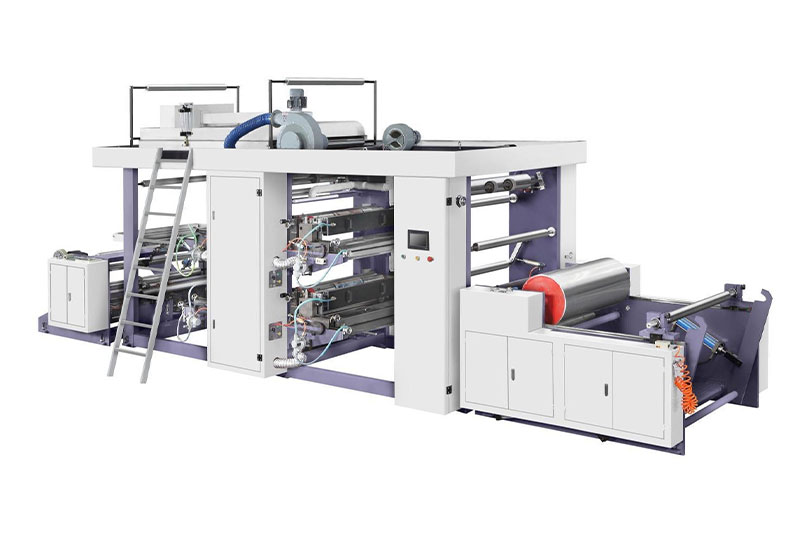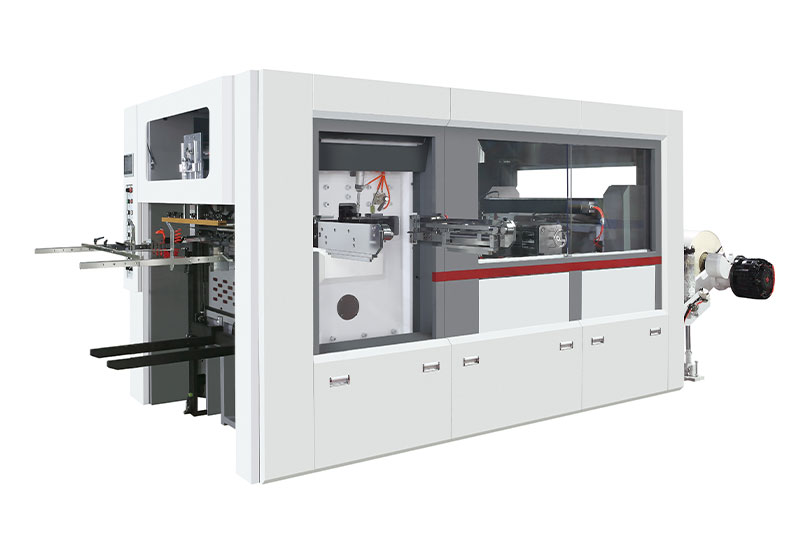What is a flexo machine?
A flexo machine, short for flexographic printing machine, is a widely - used device in the printing industry. It has distinct features and applications that set it apart from other types of printing machinery.

1. Working Principle
The flexo machine operates using a unique process. It employs fluid - based inks that are highly fluid in nature. The ink transfer process starts with the ink being transferred from the ink fountain by a metering roll and an anilox roll. The anilox roll, which is the heart of the ink - transfer system in a flexo machine, has tiny cells on its surface. These cells pick up a precise amount of ink from the metering roll. Then, the ink on the anilox roll is transferred to the flexible printing plate. The printing plate, made of flexible materials like rubber or photopolymer, has the image or text to be printed in relief. Once the plate is inked, a pressure cylinder applies pressure to transfer the ink from the plate onto the substrate. This substrate can be a wide variety of materials such as paper, cardboard, plastic films, and even metal foils. After the ink is transferred, the printed material usually goes through a drying process, which can involve methods like air drying, heat drying, or UV curing depending on the type of ink used.
2. Types of Flexo Machines
Flexo machines can be classified into three main types based on the arrangement of their printing units:
- Layer - type Flexo Machine: Also known as the stack - type flexo machine. In this type, the independent printing units are stacked one above the other. They can be arranged at one or both ends of the main machine frame. Each printing unit is driven by gears installed on the main wall plates. This type of machine can typically print from 1 - 8 colors, with 6 - color printing being common. It has several advantages. For example, it can perform both single - color and multi - color printing. By changing the path of the web material or using reversing rollers, it can achieve double - sided printing for web - fed printers. It can handle a wide range of substrates, including both rigid materials like single - sheet paper, cardboard, and corrugated paper, and roll - fed materials such as self - adhesive paper and newspapers. Additionally, it has strong post - printing processing capabilities. The printing units and processing functions can be flexibly configured according to user needs, and it is suitable for short - run jobs.
- Satellite - type Flexo Machine: Also referred to as the common impression cylinder type flexo machine. In this configuration, all the printing units are arranged around a common impression cylinder between two wall plates. The substrate is wrapped around the common impression cylinder during the multi - color printing process. Thanks to the direct gear transmission, accurate color registration can be achieved even without special control devices, whether printing on paper or film. This makes it very suitable for printing high - quality color products. However, it also has some drawbacks. The material can only be printed on one side in a single pass. Although it is possible to print on the other side using guide rollers, the long path of the material causes uneven stretching and deformation, making it difficult to achieve accurate two - side image registration. Also, the short distance between printing units can lead to smudging if the ink does not dry properly.
- Unit - type Flexo Machine: Consists of 4 - 8 independent and horizontally arranged printing units that are driven by a common power shaft. Each pair of plates only supports one printing unit, which allows for easy adaptation to different drum surfaces. It has advantages such as easy addition and combination of units, and convenient post - printing processing. It is also suitable for short - run jobs and can achieve double - sided printing in one pass by changing the path of the web material.
3. Features
- Simple Structure and Easy Operation: The structure of a flexo machine is relatively simple compared to some other printing machines like offset printers or gravure printers. This simplicity makes it easy to operate and maintain. For example, the short - ink - path system in a flexo machine, with its anilox roll and metering roll (or sometimes a single roll with a doctor blade), simplifies the ink - transfer process.
- Wide Substrate Adaptability: It can print on a vast range of materials. The thickness of the printable materials can vary from as thin as 0.22mm plastic films to as thick as 10mm corrugated cardboard. This adaptability makes it suitable for different industries and product packaging needs.
- Low Pressure Requirement: The pressure applied during the printing process is relatively low, about 19.6 - 39.2N/square centimeter. This is especially beneficial when printing on materials like corrugated paper that cannot withstand high pressure.
- Cost - effective: The cost of a flexo machine is generally lower compared to offset or gravure machines. In addition, the cost of plate - making is also relatively low, and the waste paper rate during the printing process is low. Overall, the production cost is about 30 - 50% lower than that of gravure printing.
- Good Print Quality: With the use of the anilox roll for precise ink - control and the development of high - performance photosensitive resin plates, flexo machines can achieve high - resolution printing. They can reproduce fine details, with a dot reproduction range of 1 - 95%, and are capable of printing 300 - line/inch color halftone images, producing print quality comparable to offset and gravure printing.
4. Applications
Flexo machines are widely used in various industries:
- Packaging Printing: They are extensively used for packaging different products such as food, medicine, and daily chemical products. The ability to print on a variety of packaging materials like paper boxes, plastic bags, and metal foils makes them ideal for this industry.
- Label Printing: For product labels, barcode labels, and price labels, flexo machines are a popular choice. They can print high - quality labels with fast - drying inks and can quickly switch between different label designs.
- Book and Magazine Printing: Although digital printing is on the rise, flexo machines are still a cost - effective option for large - scale book and magazine production.
- Poster and Leaflet Printing: They are suitable for printing a large number of posters, leaflets, and other promotional materials, thanks to their high - speed printing capabilities and ability to handle large - format substrates.
- Commercial Printing: Flexo machines can be used to print various commercial printed materials such as business documents, letters, and business cards.
In conclusion, the flexo machine is a versatile and important printing device in the modern printing industry. Its unique working principle, diverse types, excellent features, and wide applications make it an indispensable part of many manufacturing and promotional processes.



